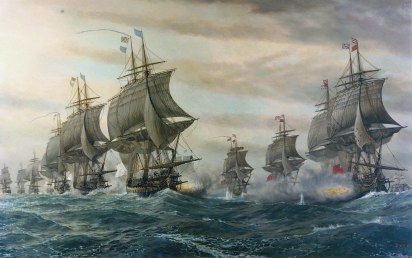
Trauma, Disease and Death in the Service of the Crown: A study of the 18th and 19th century Royal Naval Sailor
by Charlotte Coles
The Stray Park cemetery was in use from 1764 to 1824, and was associated with the Navy hospital at Stonehouse. This was established in response to corruption and negligent health care offered by private hospitals and hospital ships at the time. Unfortunately, due to the records being destroyed in the Blitz in Plymouth only two years of hospital records survive.
The site was excavated between 2005 and 2019 by Exeter Archaeology and AC archaeology and during the three phases of work a total of 1091 skeletons have been found and excavated. The latest phases of excavations found 590 skeletons including mass graves of 6-10 individuals possibly a sign of epidemics and hurried burials. Many of the skeletons were buried in coffins, most of these were Royal Navy issue coffins, however some were buried in more ornate privately paid for coffins. Full analysis has been carried out on the skeletons to ascertain the age, sex, ancestry, stature and diets of the individuals as well as studying for pathologies and traumas. All of the individuals studied were male, they ranged from 10-12 years old up to middle aged. The men came from a wide range of places including all of Europe, the middle east and even Asia. The height of the men ranged from 5 foot 3 to 5 foot 11.
There was a wide range of diseases and traumas seen on the skeletons, these include scurvy; a common condition with sailors at the time and caused by Vitamin C deficiencies, childhood conditions such as rickets and iron deficiencies, infectious diseases such as tuberculosis and syphilis, joint disease such as osteoarthritis and a huge amount of trauma caused by falls, fighting and battle injuries. There were also individuals who had amputated limbs, most who had not survived the procedure.
There were some objects recovered from the graves including coins placed near the eyes or mouth to pay the Ferryman to pass to the afterlife, there were buttons and cufflinks and a cruciform pendant worn around the neck of one of the men.
The findings of this excavation show the extremely hard lives and serious dangers that these men and boys faced both in combat and with terrible diseases, they also show a fascinating glimpse into the advancing medical techniques of the time and also the social history of the Royal Navy.
[summary by Charlotte Coles]
Charlotte Coles has been working in commercial archaeology for ten years. She has a master’s degree in Osteoarchaeology and she carries out animal and human bone analysis as well as archiving and other finds reporting.

